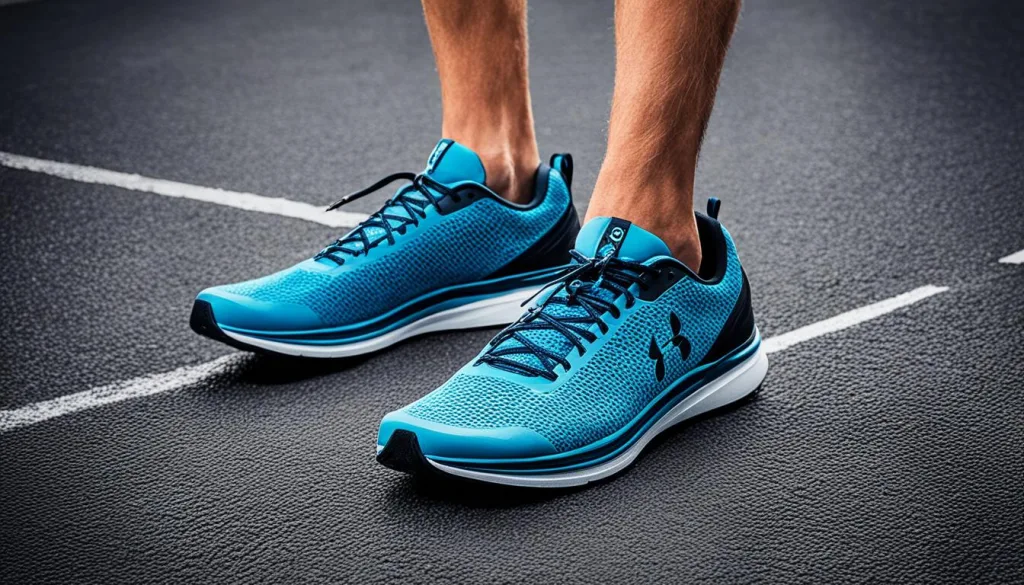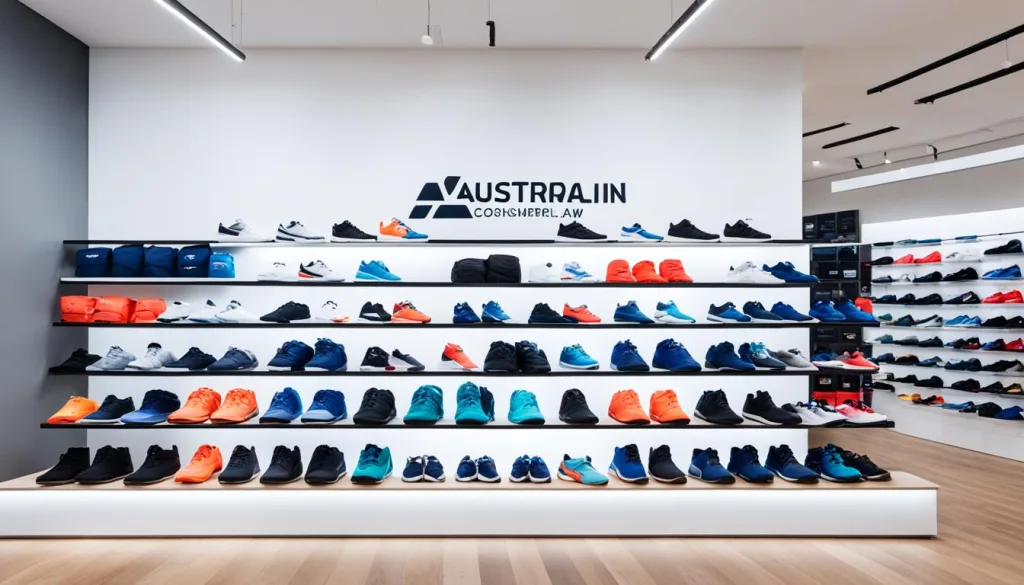Meeting Australian Consumer Law Requirements for Sportswear
Connect With Us Today
Consider us for your next production run. Why wait? Send us your questions here.
Meeting Consumer Law Requirements for Sportswear is more than a legal must-do. It builds trust. When sportswear companies follow Australian Consumer Law (ACL), they do more than just stick to rules. They also create a clear, honest bond with people who love being active.
Key Takeaways
- The importance of understanding Australian Consumer Law for sportswear retailers cannot be overstated.
- Compliance with consumer law is essential for establishing trust with sportswear customers.
- Failure to meet consumer law requirements can lead to significant financial penalties1.
- Clear communication regarding additional fees, service nature, and total cost is mandated by the ACL1.
- Transparency and honest marketing practices help avoid misleading consumers and uphold legal standards1.
Introduction to Australian Consumer Guarantees for Sportswear
Knowing about Australian Consumer Guarantees is key for both shoppers and stores. Everyone buying or selling items like sportswear for their own use is covered. This means the sportswear must meet certain standards. Sellers are responsible for providing items that match these rules.
Understanding Basic Consumer Rights in Sportswear Purchases
People who buy sportswear have rights. One right is that what they buy must be safe and last a reasonable time. If someone gets sportswear as a gift, they have the same rights. But, there are some exceptions, like private sales or buying from overseas companies.
The Importance of Consumer Guarantees for Sportswear Retailers
Stores selling sportswear should care about consumer guarantees. They show customers can trust them. Guarantees are not the same as warranties, and stores can’t just take them away. Breaking this law is serious. It can lead to big problems, like in the case where the ACCC sued Valve Corporation. This case shows laws apply to foreign companies too, if they sell to Australians.
Even if a company is not in Australia, if they deal with Australian customers, what they say counts as being said in Australia.
The Role of Acceptable Quality in Sportswear Standards
Quality in sportswear means bringing several aspects together. This includes safety, lasting use, and meeting what buyers expect from their gear2. Australia’s Consumer Law helps by setting these basic standards. It makes sure sportswear is safe and durable for personal and some business uses2.
Quality sportswear must be safe, durable, and meet usage standards. Yet, there are some exceptions like private sales and global buys that have different quality standards2.
The sports sector works hard to ensure quality and fairness. The Australian Sports Commission, for example, focuses on great processes to improve sports apparel3.
Consumer law and sports rules help set high standards for sportswear. For athletes, this means their gear must meet strict quality and fairness standards3. “Getting It Right” shares these ideals. It helps make sportswear better in material quality and design3.

So, quality in sportswear isn’t just about following rules. It’s about meeting the high expectations from sports bodies and laws together23. This makes sure the sportswear can handle the tough demands of sports. And it sets a high standard for what we expect from our sports gear23.
Meeting Australian Consumer Law Requirements for Sportswear
In today’s market, Legal Standards for Safety and Durability in Sportswear are getting a lot of attention. It’s crucial for companies to meet Australian Consumer Law standards. They need to make sure their sportswear is safe and lasts long to protect their customers.
Adhering to Legal Standards for Safety and Durability
To follow Australian Consumer Law, sportswear must meet specific safety and durability standards. These cover the quality of materials, how items are designed, and how they are made. These rules help keep the industry honest and protect shoppers from harm or buying something they’re unhappy with.
Navigating Warranties and Consumer Protections for Sportswear
It’s key for sportswear companies to understand warranties and consumer protections. They should offer refunds, repairs, and replacements to help their customers. This meets Consumer Law Requirements for Sportswear and builds trust with people who buy their products.
| Consumer Protection Aspect | Description | Impact on Compliance |
|---|---|---|
| Material Standards | Materials used must provide durability and safety, ensuring longevity and consumer security. | Fundamental to adherence with safety regulations in sportswear. |
| Manufacturing Processes | Processes must eliminate risks and defects in sportswear, upholding quality control. | Essential for maintaining product consistency and compliance. |
| Labeling | Clothing labels should offer detailed information, including care instructions and material composition. | Enables informed purchasing decisions, aligning with consumer rights for truthful marketing. |
| Warranty Terms | Clearly articulated warranty information safeguards both the consumer and the business. | Demonstrates compliance with the requirement for transparency. |
| Refund Policies | Refund protocols must be robust and customer-centric, simplifying the return process. | Reflects company adherence to consumer rights for quality assurance. |
Following the rules is about more than just avoiding legal trouble. It’s about respecting customer rights and building a brand they can rely on. With new ways to reach sports fans, like the new platform launching in fall 20244, sportswear brands have a big chance. They can show their commitment to quality and legal standards to many people.
Implications of Misleading Sportswear Customers on Legal Compliance
Misleading customers about sportswear harms trust and invites legal issues. In Australia, lying to consumers about sportswear quality and safety is illegal. Items for personal use must meet strict consumer standards2.

Knowing the effects of misleading sportswear buyers is crucial. Consumer rights cover items priced below $100,000, including most sportswear2. These rights also apply to gifted items, a fact sellers must make clear2.
Sportswear companies sell more than just products; they sell trust in their brand. Providing safe, durable, and flawless items ensures sportswear quality. This focus on quality boosts customer satisfaction and the brand’s reputation2.
But, there’s a catch with certain purchases, like those meant for reselling or fixing. These don’t get the same protections. Sellers need to clarify this to prevent confusion and legal issues, particularly with international sales2.
Sportswear sellers must be honest in their advertising to avoid legal troubles. Disregarding these rules can harm the brand and trust beyond repair. Clear communication about rights and guarantees can stabilize customer loyalty and keep businesses safe legally.
Sportswear Compliance Guidelines and Industry Regulations in Australia
The Sportswear Compliance Guidelines in Australia have undergone significant changes. A key update is the improvement of the mandatory care labelling standard. Starting September 5, 2023, this change requires clearer instructions for sportswear care to help products last longer5. This update is legally required and helps customers understand the costs of maintaining their sportswear5.
The new labeling requirements cover a wide range of items. This includes everyday clothes, household textiles, and materials like suede and leather. Businesses need to know that these rules apply widely, but some exceptions exist5.
Understanding Sportswear Regulations for Business and Personal Use
Businesses must follow the transition period rules. Until March 4, 2024, care instructions can be in English only. Afterward, they can use English, international symbols, or both for instructions. This change aims for clear understanding, no matter the language5. These rules are part of Australian and International Standards. They ensure care labels on sportswear are clear and consistent5.
Special Considerations for Sportswear Gifts and Business Use
When sportswear is a corporate gift or used professionally, Sportswear Regulations for Business and Personal Use need special attention. Businesses must ensure labels comply with current standards when giving sportswear as gifts5. It’s important to include Special Considerations for Sportswear Gifts in company policies. This ensures all sportswear meets regulations5.
Businesses should keep up with sportswear guidelines to maintain good practices. Following these rules ensures quality and safety for consumers. It also provides clear, educational instructions on caring for sportswear. This empowers consumers to make informed choices for maintaining their sportswear5.
Conclusion
We’ve looked at how Australian Consumer Law plays a big role in the sportswear industry. This industry blends performance with accuracy, and following the law not only means companies are doing things right but also builds trust with customers. The Australian Competition and Consumer Commission (ACCC)’s efforts show us how being clear and truthful about environmental claims is important. It matters a lot to people, with 45% of Australians thinking about sustainability when they buy something6.
Being respected in sportswear means really caring about quality and not misleading customers. Companies need to make strong products and care about the planet too. The ACCC’s advice helps companies make clear, true statements about what they offer. This makes sure they follow sportswear laws and show the real value of their goods and services.
In the end, sportswear companies need to remember how important their messages are. They must tell the truth and make promises they can keep, following both the law and ethics. As the industry grows, these brands must keep their promise of being honest. This will help them stay ahead in a world where following the rules and being open matters a lot.
FAQ
What are Australian Consumer Guarantees for sportswear purchases?
How is acceptable quality defined for sportswear products?
What legal standards must sportswear products meet?
What are the consequences of misleading customers in the sportswear industry?
What are the compliance guidelines and regulations for sportswear in Australia?
Source Links
- https://www.accc.gov.au/consumers/buying-products-and-services/buying-tickets-to-events
- https://www.accc.gov.au/consumers/buying-products-and-services/consumer-rights-and-guarantees
- https://www.clearinghouseforsport.gov.au/__data/assets/pdf_file/0010/855334/GettingItRight.pdf
- https://espnpressroom.com/us/press-releases/2024/02/espn-fox-and-warner-bros-discovery-forming-joint-venture-to-launch-streaming-sports-service-in-the-u-s/
- https://www.productsafety.gov.au/product-safety-laws/safety-standards-bans/mandatory-standards/care-labelling-for-clothing-and-textiles
- https://www.accc.gov.au/about-us/media/speeches/the-acccs-expectations-for-corporations-making-green-claims-at-the-general-counsel-summit
Latest News
How Collaboration Shapes Consumer Preferences in Sportswear
Navigating Consumer Rights and Warranties in Sportswear Sales
Artificial Intelligence in Fashion Forecasting and Trend Analysis
The Shift Towards Inclusive Sizing in Sportswear: Consumer Reactions
The Global Expansion of Luxury Sportswear Brands
From Sketch to Gym: The Design Process of Fashionable Sportswear
Understanding the Role of Trade Associations in Sportswear Compliance
How Economic Trends Influence Consumer Spending on Sportswear
Learning from Successful Global Market Entries
Best Practices for Managing Cross-Cultural Teams
Using Technology to Fight Counterfeit Fashion Products
Carbon Nanotube Fabrics for Superior Strength and Flexibility
The Growth of Fitness Tracking Apparel in Health and Wellness
Exploring the Influence of Social Proof in Sportswear Purchasing
Strategies for Managing Compliance in a Multinational Operation
Trends in Global Footwear: Performance Meets Lifestyle
The Role of Artificial Intelligence in Tracking Supply Chain Operations
Evaluating the Success of Sportswear Collaborative Projects
Evaluating the Potential of Emerging Markets
Global Shifts Towards Gender-Neutral Sportswear
Share This Article
Latest Articles



















